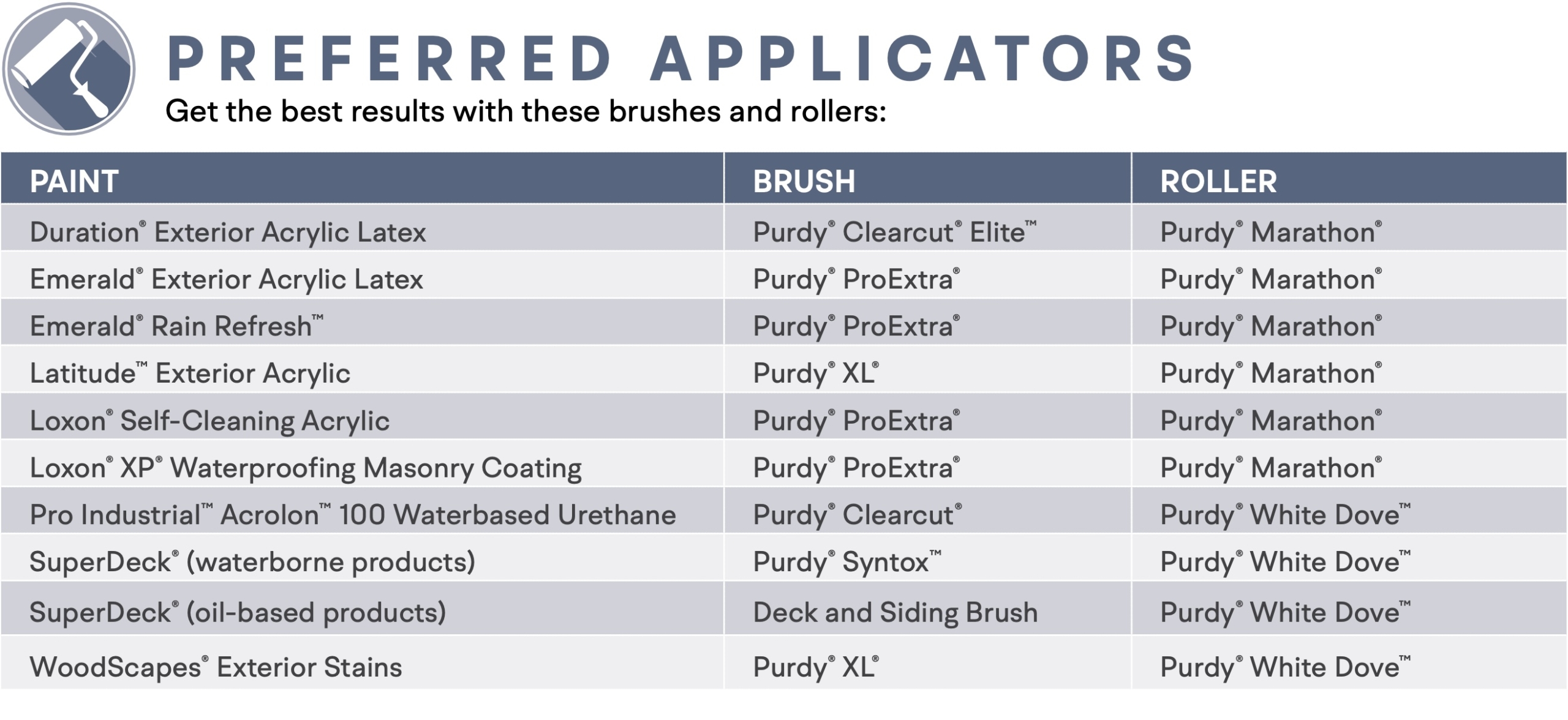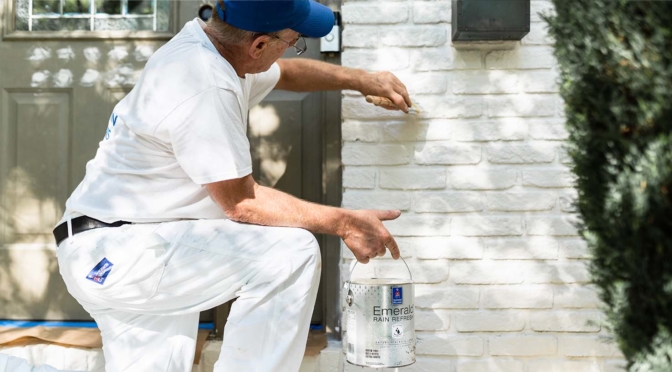In this first part of our Exterior Excellence special report, we’ll take a look at the basics: the ingredients that make up paint and the importance of picking the right sheen and the right applicator.
The right ingredients
Paint is made up of four basic elements: solvent, binder, pigment and additives.
Two types of pigment go into a can of paint. First are “prime” pigments. These provide color and hide. Second are low-cost “extender” pigments. They add bulk to the product, but add little value in terms of color. Higher-quality paints have more of the all-important prime pigments, which provide easier application, greater durability and better color retention.
There are a variety of binders used in today’s paints, which affect everything from adhesion to stain resistance. Coatings made with higher-quality binders adhere to surfaces better and provide enhanced film integrity and longer-lasting performance. This makes them more resistant to cracking, blistering and peeling.
Top-quality paints have a greater ratio of solids – pigments and binders – to liquids. The material left on a substrate after the solvent evaporates and the coating cures is its solids content.
When calculated as a percentage of the total gallon of paint, the solids are referred to as volume solids. A higher percentage of volume solids is usually an indication of a better quality paint, because more binder and pigment are the solvent evaporates and the coating cures is its solids content.
When calculated as a percentage of the total gallon of paint, the solids are referred to as volume solids. A higher percentage of volume solids is usually an indication of a better quality paint, because more binder and pigment are left to protect the surface compared to a coating with a lower volume solids rating.
The right finish
The type of paint you choose depends on the kind of surface to be painted and the type of finish you want.
A flat or matte finish, for example, softens the look of an exterior and helps hide surface blemishes. Flat finishes are ideal for body siding.
With its slight gloss, a satin finish offers the benefits of a flat finish with added cleanability. It works well for the entire exterior and surfaces that need routine cleaning.
Gloss offers a lustrous, durable finish perfect for areas that require frequent cleaning like doors, trim, window frames, lamp posts, gutters, downspouts and railings. A high-gloss sheen can provide a harder and shiny finish, excellent for front doors, accent trim and decorative fixtures.

The right applicators
Quality also matters when it comes to applicators. A good-quality brush, for example, holds more paint and applies it more evenly, which will require less effort, save time and help you give your customer the best result. Among the factors to consider are brush size, style and bristle type.
Rollers can work well when painting large flat surfaces or concrete and masonry substrates like stucco and brick. If the surface is porous or textured, use a heavy-nap roller cover (1/2-inch or more). Use a 1/4-inch nap to maximize sheen on a smoother surface.
Spraying is an excellent exterior application method and can help you get the job done faster. Here, the size of the project will be a factor. If the job is small, the setup time (masking windows and landscaping, machine setup, cleanup and maintenance) may not be repaid by the amount of time saved by spraying.
More in our Exterior Excellence special report
Products for Pros: The Best Exterior Coatings
Expert picks for today’s best exterior coatings, including the top everyday paints, high-performance specialty coatings, concrete coatings and wood finishes.
How to Calculate Cost Per Year of Service
Before you specify paint based on price, consider this: Lower- quality paints require more coats to cover and, because they aren’t as durable, need maintenance much sooner. This is especially true with exterior coatings.
This article was originally published in the Spring 2025 issue of PPC/Pintor Pro magazine. Photos courtesy Sherwin-Williams. ©2025 Fusable.


